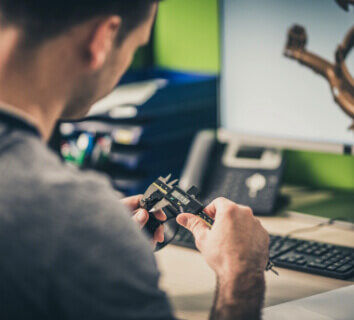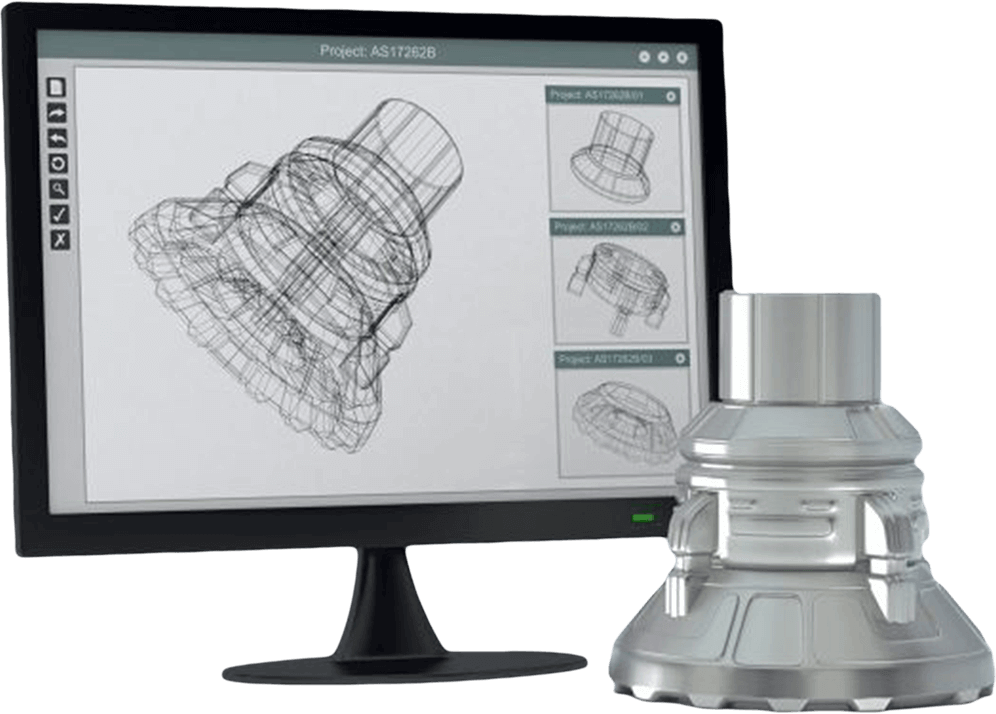Design for Manufacturing: CNC Machining
Get a Quote
40+ years of experience

ITAR Registered

ISO9001: 2015 Certified
Designing for manufacturing is crucial when it comes to CNC (Computer Numerical Control) machining. Effective design can help optimize the manufacturing process, reduce costs, improve quality, and ensure that parts meet their intended functionality.

Here are some tips and rules for designing CNC machined parts:
- Material Selection:
- Choose appropriate materials based on the desired mechanical properties, such as strength, hardness, and corrosion resistance.
- Consider the availability and cost of materials, as well as their machinability.
- Part Geometry:
- Keep designs as simple as possible while meeting functional requirements. Complex geometries often result in longer machining times and higher costs.
- Avoid sharp corners and internal angles, as they can be challenging to machine and may require additional tooling.
- Tolerances:
- Specify tight tolerances only when necessary for the part’s function. Tighter tolerances can increase manufacturing costs significantly.
- Communicate tolerance requirements clearly on the drawing.
- Fillets and Radii:
- Use fillets and radii to reduce stress concentrations and improve the part’s durability.
- Avoid sharp edges, which can lead to tool wear and reduce part strength.
- Hole Sizes and Depths:
- Design holes with standard drill sizes to minimize tool changes and reduce machining time.
- If possible, avoid deep holes, as they may require specialized tooling and longer machining cycles.
- Wall Thickness:
- Maintain uniform wall thickness to prevent distortion and warping during machining.
- Avoid excessive thinning or thickening of sections, as it can lead to machining difficulties and dimensional issues.
- Overhangs and Undercuts:
- Minimize overhangs and undercuts, as they may require additional setups and tool changes, increasing machining complexity and cost.
- Internal Threads:
- Use standard thread sizes whenever possible to simplify tool selection and reduce costs.
- Ensure that threaded holes are properly designed to prevent issues like tapping tool breakage.
- Tool Access:
- Ensure that the CNC machine can access all required features of the part without interference.
- Design features in a way that allows tools to reach critical areas without the need for complex setups.
- Surface Finish:
- Specify the required surface finish (e.g., Ra value) for each surface of the part to meet functional and aesthetic requirements.
- Prototyping:
- Consider creating prototypes or mock-ups to test the design and identify potential issues before committing to full-scale production.
- CAD Software:
- Use professional CAD software to create accurate and manufacturable 3D models and 2D drawings.
Include all necessary annotations, dimensions, and tolerances in your drawings.
- Use professional CAD software to create accurate and manufacturable 3D models and 2D drawings.
- Communication with Machinists:
- Maintain open communication with the CNC machinist or manufacturing team to address any questions or concerns about the design.
- Cost Considerations:
- Be mindful of material costs, machining time, tooling costs, and post-processing requirements when designing parts.
- Explore opportunities for design simplification to reduce overall costs.
- Quality Control:
- Design features that allow for easy inspection and measurement of critical dimensions.
- Consider using datums or reference points for accurate alignment during inspection.
By following these tips and rules for designing CNC machined parts, you can enhance the efficiency of the manufacturing process, reduce costs, improve part quality, and ultimately achieve a successful outcome for your project. Collaborating closely with experienced CNC machinists and engineers can also be invaluable in optimizing your designs for manufacturability.
